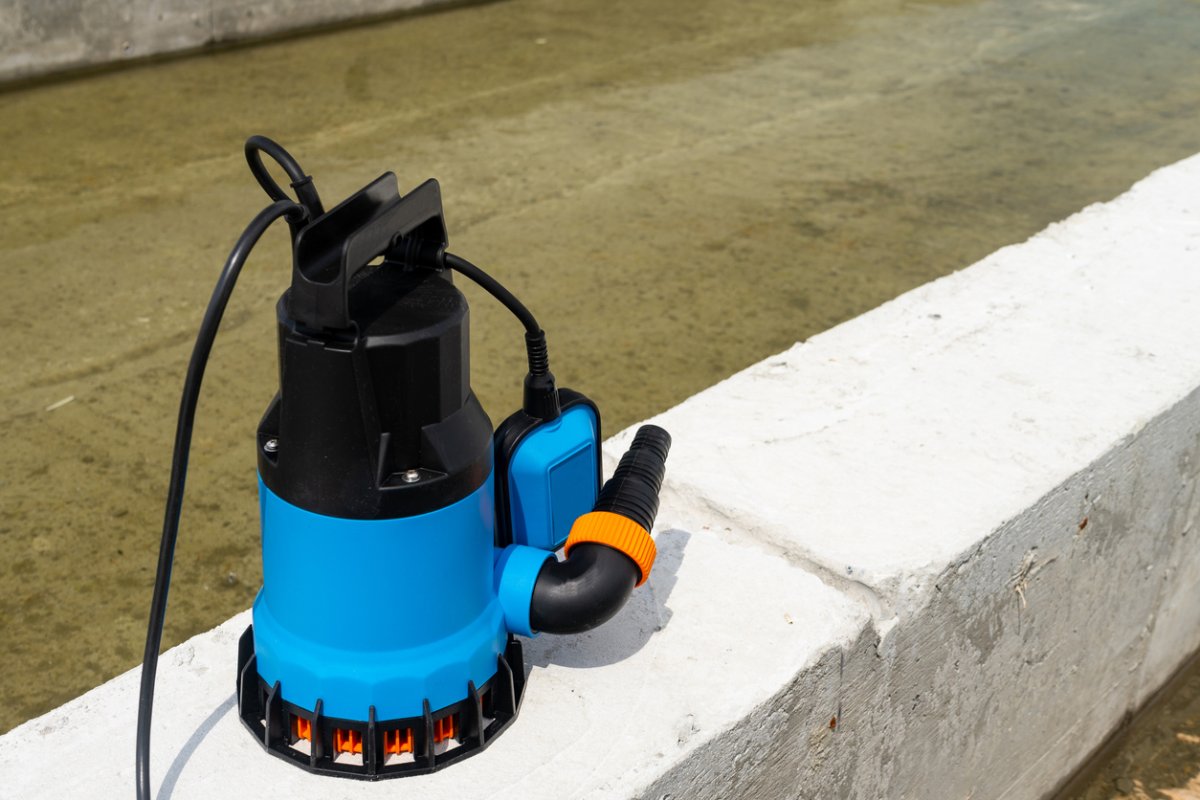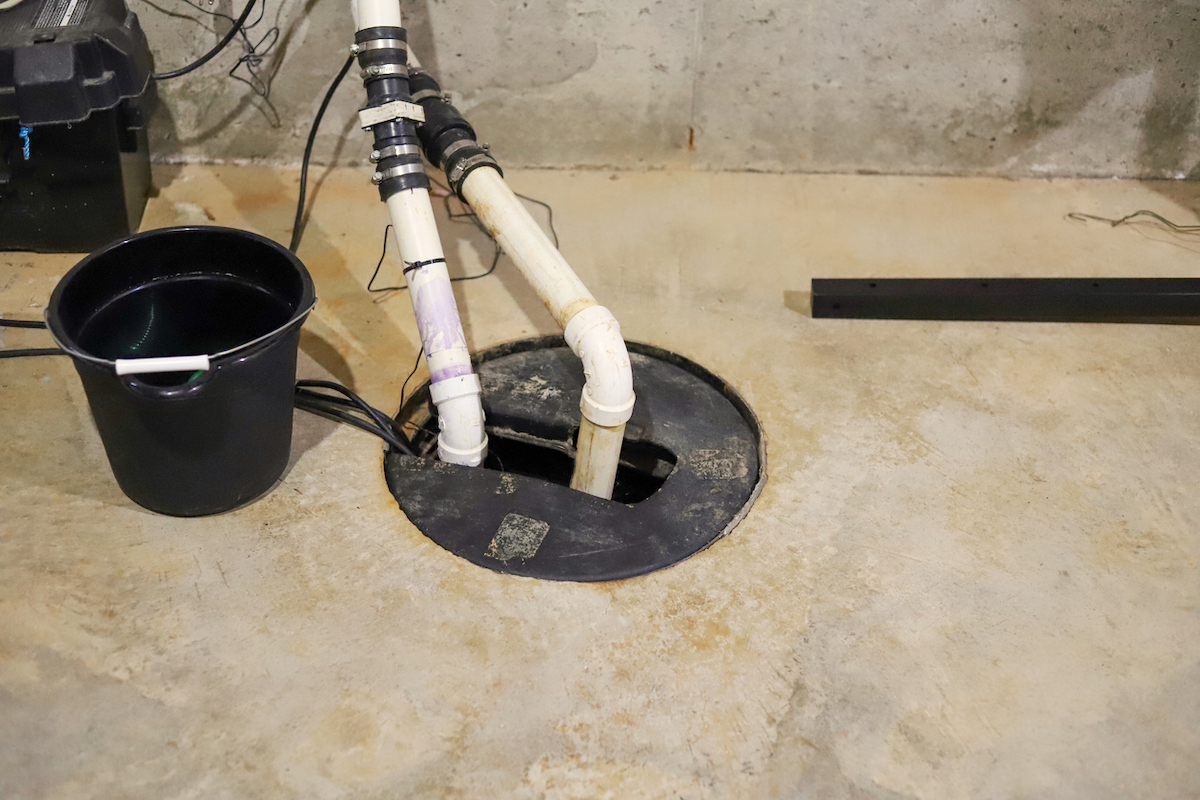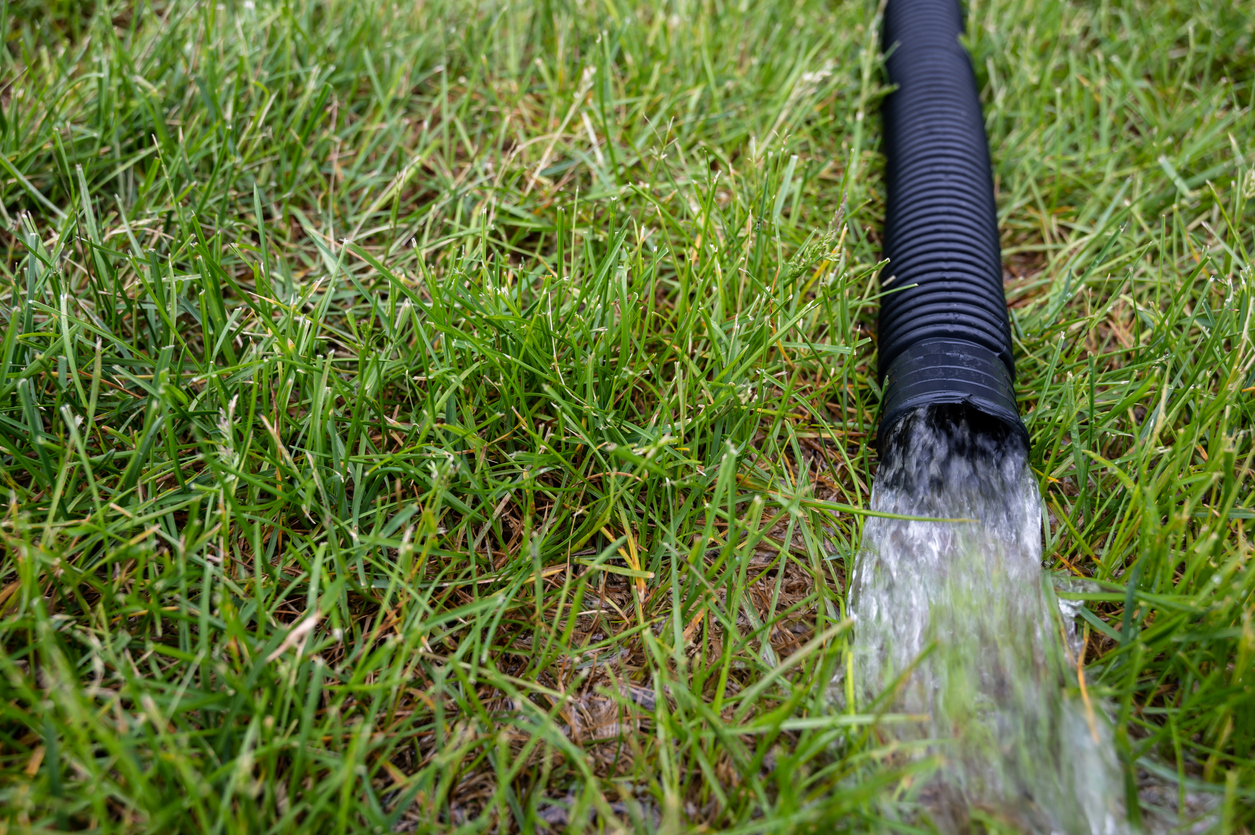

We may earn revenue from the products available on this page and participate in affiliate programs. Learn More ›
How often should a sump pump run? What do you need to do to maintain a sump pump? If you’ve been asking these questions, you’re in the right place.
A sump pump works to keep a basement dry by moving water away from the house. It consists of a sump or basin in the basement floor that holds a large pump. Also inside the sump are special valves that can sense the water level and pressure. If the water level rises too much within the sump, the pump will move water away from the house through the discharge line.
Clearly, a sump pump has a very important job. If it stops functioning correctly, you could end up with a flooded basement. The following sump pump inspection and maintenance steps are important and should be performed at least once a year. If you live in an area with a lot of rain or snow, your sump pump will work even harder, and might require quarterly maintenance.
1. Clear the sump basin of debris.
Before you get into following the steps necessary for how to clean a sump pump, you should start by unplugging the unit from the power supply. Never clean a sump pump while it is still plugged in, since this can be very dangerous.
Then, remove any loose or large debris from the basin. This step is important to make it easier to remove the pump itself for a more thorough cleaning.

2. Remove the pump and thoroughly check for corrosion or other damage.
To truly clean the sump pump, you’ll need to remove the pump from the basin. You’ll first need to disconnect the discharge pipe from the pump. If the pipe seems stuck on the pump, try using WD-40 to loosen the connection and avoid damaging the pump or the pipe. Keep in mind that resistance can indicate that mold is building up around the connection site. If this is the case, you’ll want to use disinfecting vinegar or bleach to kill the mold—but never both ingredients together.
Once the pump has been disconnected from the discharge pipe, take it out of the basin and place it in a large trash bag. Bring the pump and bag outside where you can work without worrying about making a mess in the house. Of course, if you have an external sump pump, you can skip this move, since you’ll already be outside.
Use a damp cloth or a sponge to wipe the sump pump and remove any grime. If there is a lot of buildup and gunk that needs to be removed, you can also spray the pump with a garden hose or use a diluted vinegar solution. While cleaning the pump, examine it closely for any signs of corrosion or damage. If you notice anything that looks off, you’ll want to contact a qualified professional to fix it before too much damage to the pump occurs.
Related: The Best Battery Backup Sump Pumps
3. Clean the pump inlet screen.
The sump pump inlet screen is located along the base of the pump. This screen acts as a filter to keep debris from entering the pump itself and causing damage. To clean the sump pump screen, use a scrub brush to remove any buildup or debris that might be caught in the filter.
4. If recommended by the manufacturer, lubricate pump bearings.
Next, read through your owner’s manual to see if the manufacturer recommends lubricating the pump bearings.
Some sump pumps are designed with sealed bearings. These models will not need to be lubricated, while pumps with unsealed bearings will require lubrication.

5. Inspect the outside discharge pipe and surrounding area.
The sump pump’s drainage system should also be inspected to make sure water is carried far away from your home to prevent threats to your home’s foundation. Check the discharge pipe for the sump pump to ensure that it is in place and directing water at least 20 feet away from your home. You will also want to confirm that the pipe is unclogged and clean to ensure water can flow through it freely.
Related: How Much Does a Sump Pump Cost to Install?
6. Test the pump to ensure it works properly.
Finally, bring the pump back inside, place it in the basin, and reconnect the discharge pipe. Then, pour a few buckets (approximately five gallons) into the basin.
Plug the sump pump back into the power source. If the pump is working properly, it should kick on and start pumping the water out of the basin and into the discharge pipe. Watch the float switch carefully during this time to confirm that it starts and stops the pump at the appropriate times based on the amount of water present in the basin.
